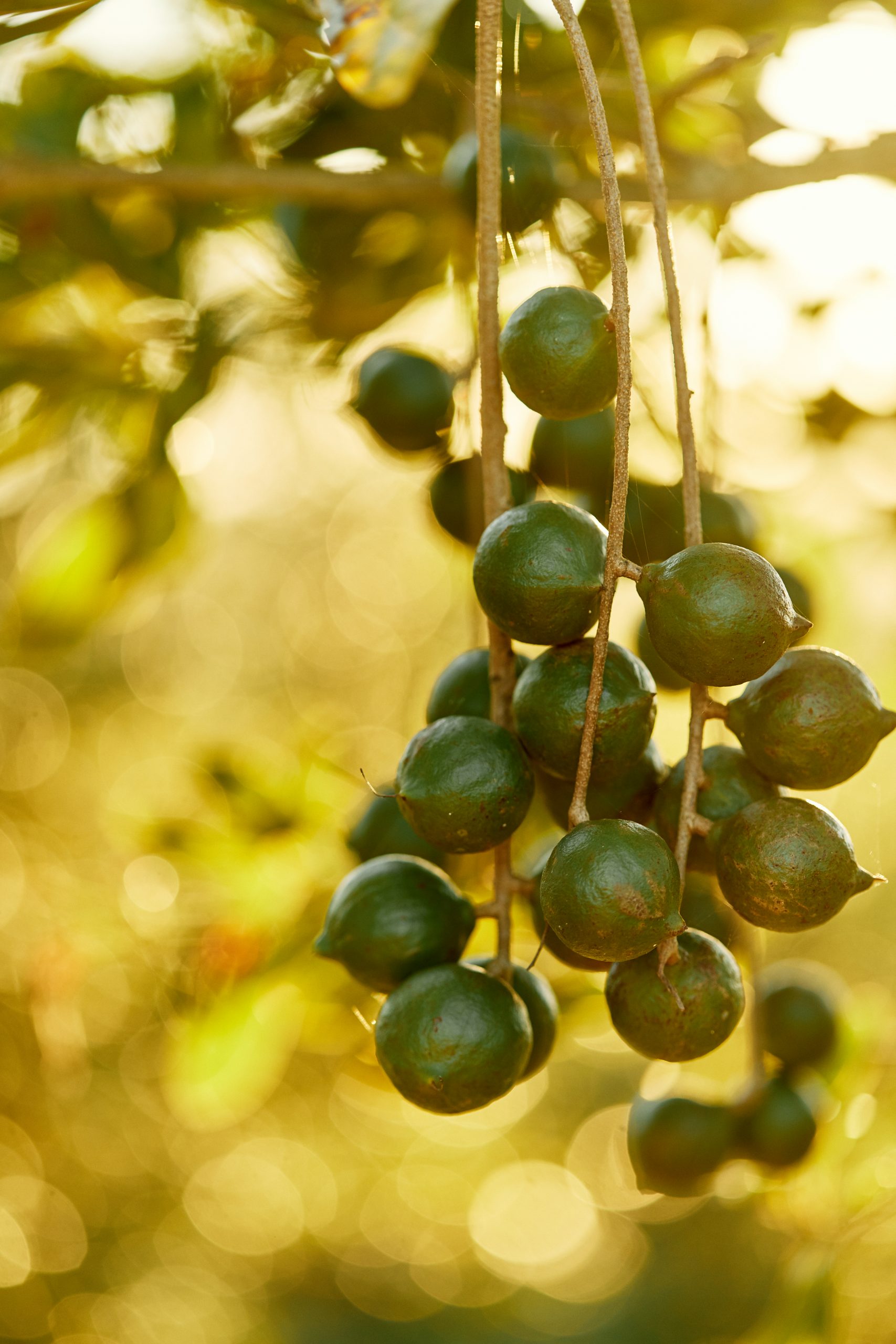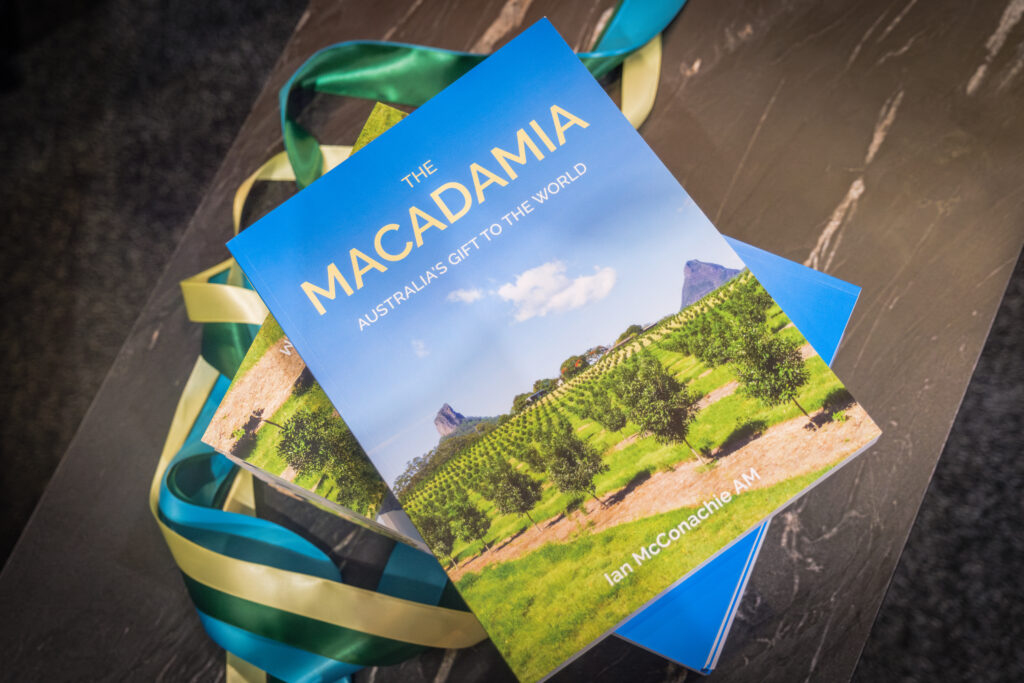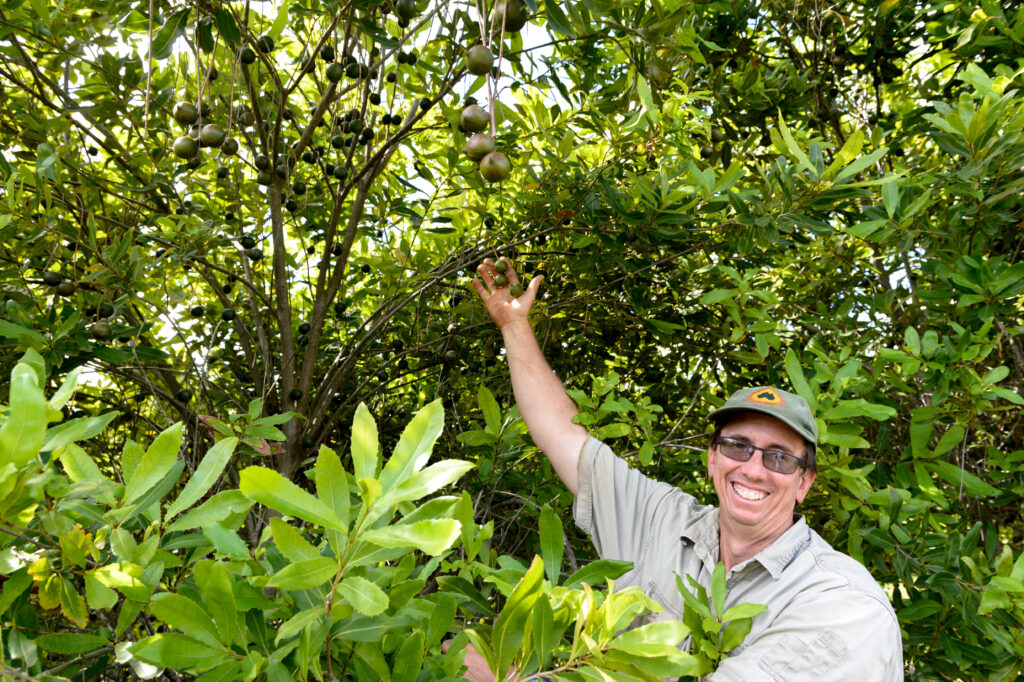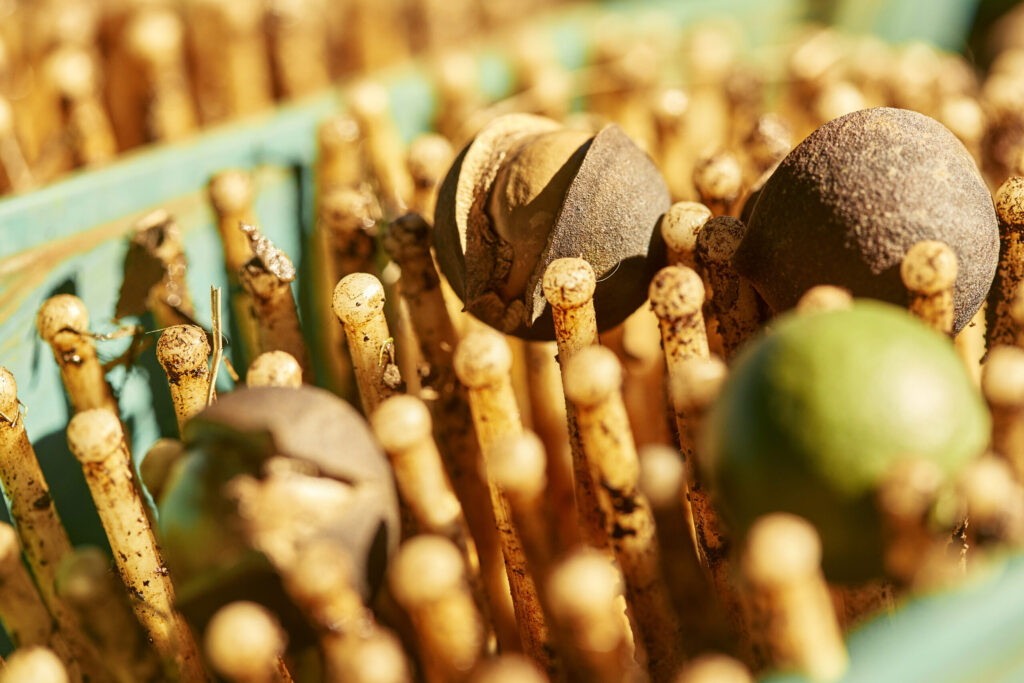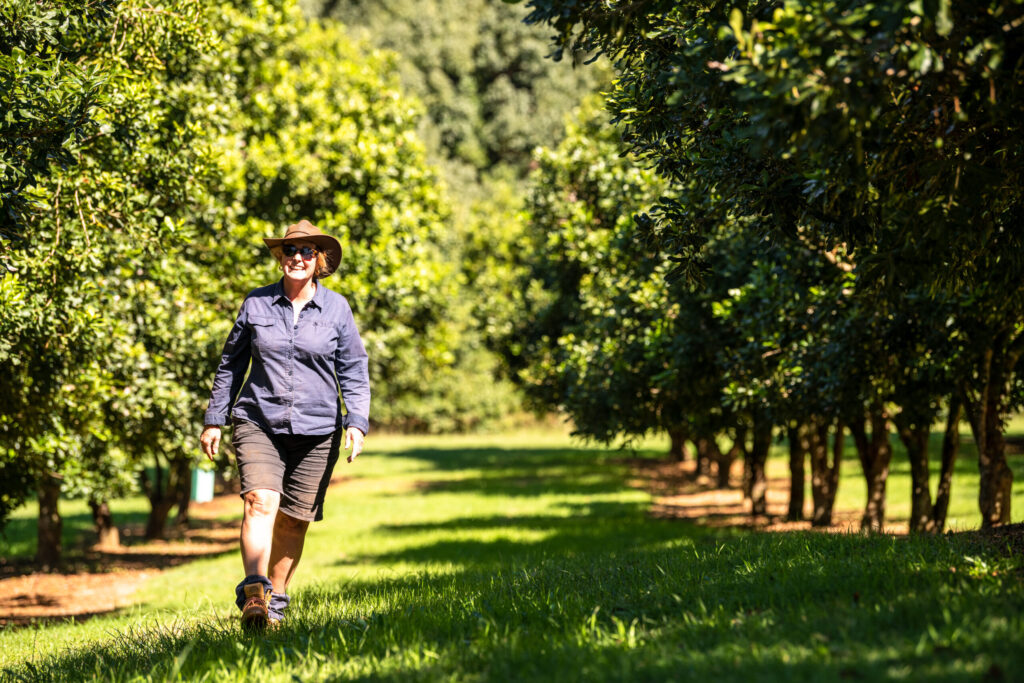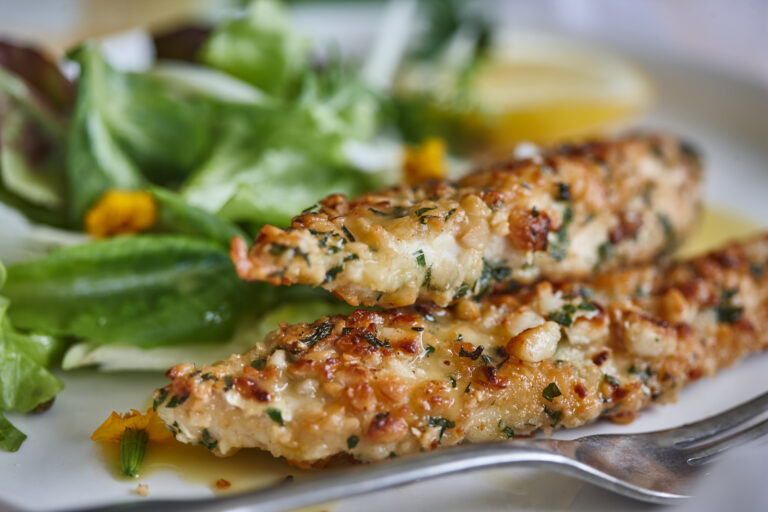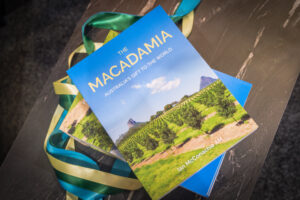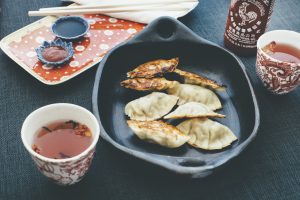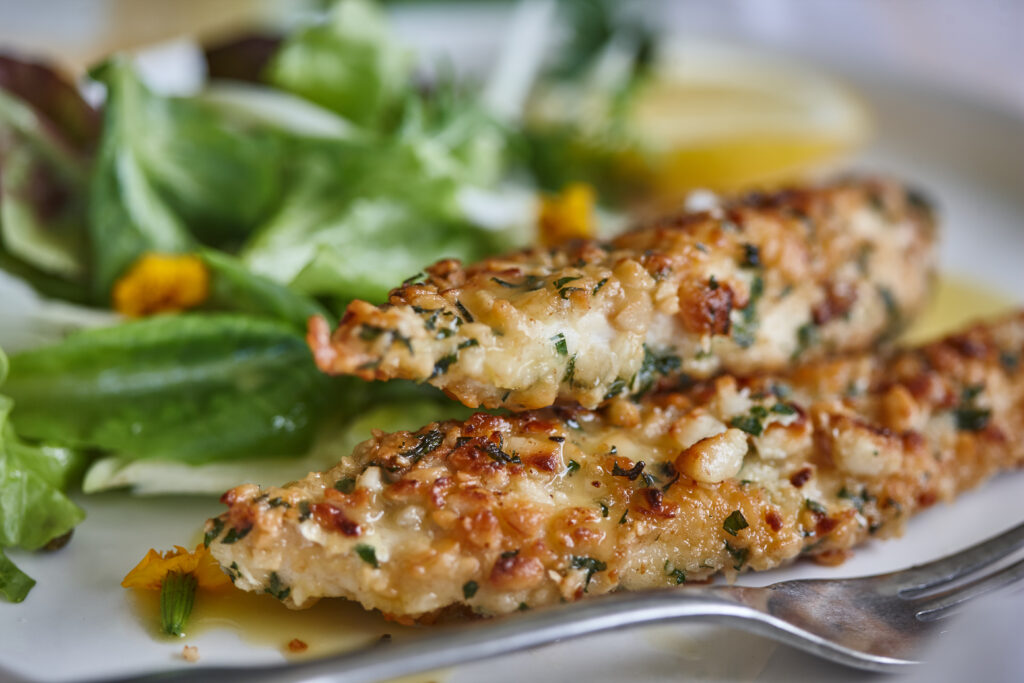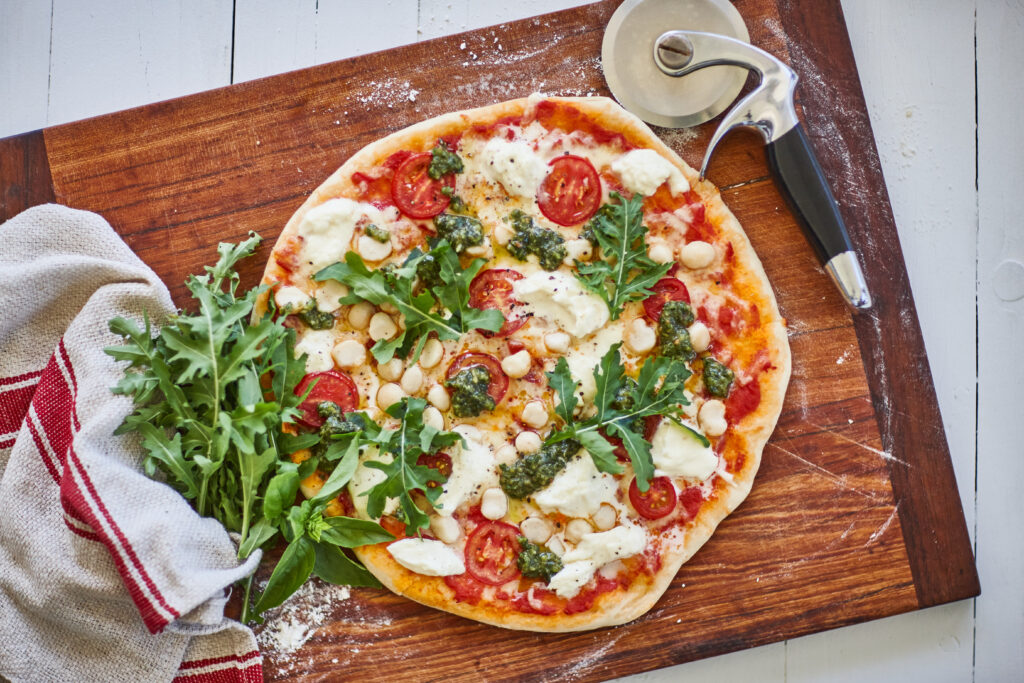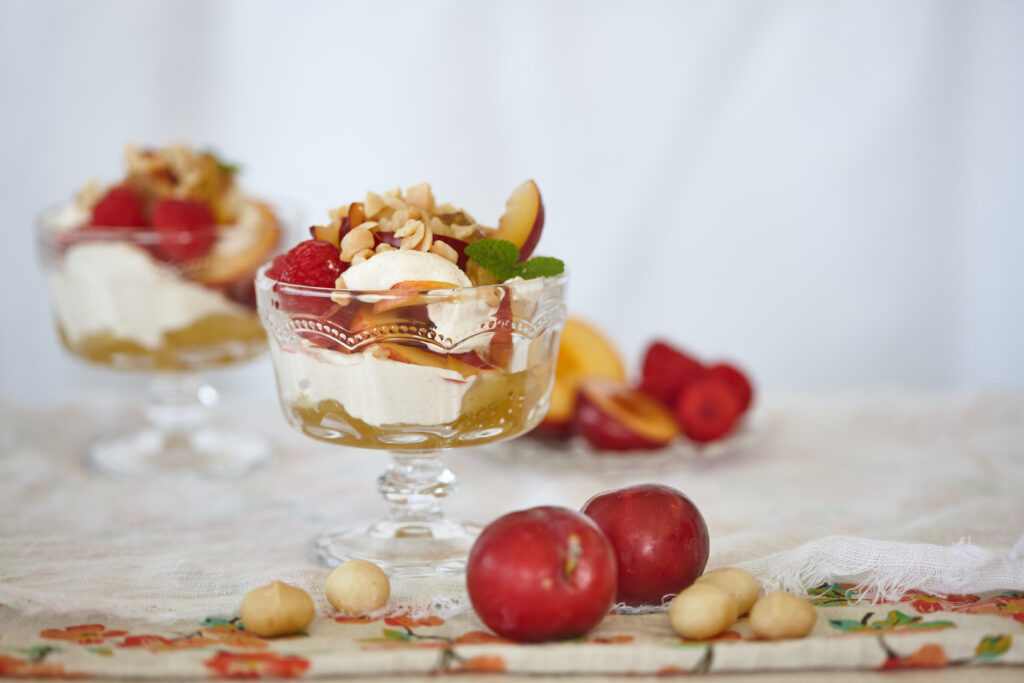Macadamias are delicious and native to Australia, so it’s no surprise that many people wonder whether they can grow a macadamia tree in their own backyard or garden to ensure they have a ready supply. However, before buying a sapling from a reputable nursery, you might like to consider these things to make sure all your efforts aren’t in vain.
Do you live in the right climate for a macadamia tree to produce nuts?
As they are native to north eastern region of New South Wales and South East Queensland, macadamias prefer frost-free environments where the temperature does not get above 40C. A temperature between 25-35C is ideal. If you get frost, you will need to protect the tree for at least the first 3 or 4 years after planting. Macadamia trees need reasonably high amounts of rain, around 1000mm annually, especially during the summer months. They will grow in a wide range of soils, but if your soil is sandy we would recommend adding lots of composted organic matter.
Do you have enough room to grow a macadamia tree?
Macadamia trees naturally grow into very large trees. After all, they originated in the subtropical Australian rainforest! A tree can grow up to 20m high over 30 to 40 years and spread up to 10m wide. If your garden can’t tolerate a tree this big, you can prune the tree hard after harvest and before flowering. Luckily, you can prune a macadamia tree to any height.
It is always best to start shaping a macadamia tree early. Once it gets to a manageable height, take the leader out and encourage three or so side branches to grow. Once these get to the height you have set, take them out and so on. What you should get from this is a tree that pushes up and spreads. As the tree gets older you may have to get a bit more drastic in your removal of limbs but as long as you make clean cuts that are flush to the trunk or main branch, the tree will cope.
Although two trees are not essential for pollination, you will collect more nuts if you have two different varieties of macadamias in your garden.
What is the best variety of macadamia to grow?
The variety is not really important. Most macadamia varieties will do well if you can protect them from frost for the first 5 or so years. Any variety with an A in front of the number will have thinner shells (and more kernel). Speak to your local nursery who will advise what suits your specific area.
Do you like bees?
Since macadamias are pollinated by bees and other insects you will need to make sure your garden or backyard can also support plenty of other flowering plants to attract bees and insects to your tree during spring. A backyard or garden close to a nature reserve is ideal to attract pollinators.
Introducing native bees may help pollinate your tree, if you find you have abundant flowers, but not many nuts. This is one of the yield increasing tricks that many Australian macadamia growers employ.
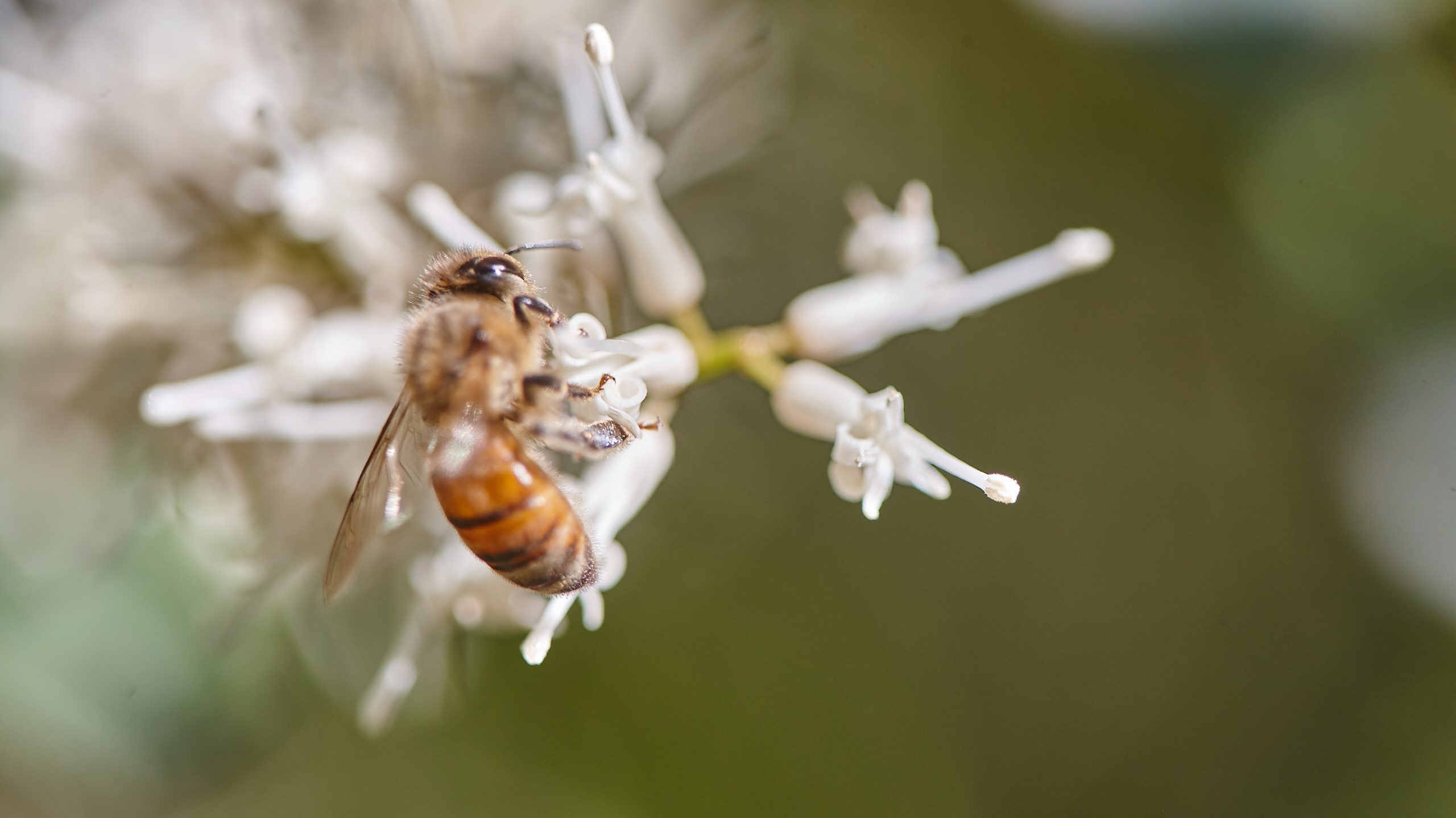
Can you keep pests away from your macadamia tree?
Birds like galahs and cockatoos love macadamia nuts as much as humans, but over time the trees can grow too big to use nets. To keep your harvest safe, we suggest you try using scare tactics – loud noises or shiny silver items like CDs hanging in the tree can work well.
Rats can also be an issue, especially if you live in an area close to bushland. A pest company can install professional bait stations around the base and tied to branches in the shadier parts of the tree. If you don’t want to use baits, the other option is more old fashioned – a cat or a dog that is a good ratter.
Nut borer is another common pest for macadamia trees. These critters often spend winter in mangrove areas and feed on maturing nuts over summer. As an organic solution, introduce Trichogramma wasps to eat the nut borer larvae. Don’t worry, it is not a wasp that will harm humans or pets. It was developed to help the macadamia industry control pests without chemicals and should work for a single tree. Bioresources can send you some Trichogramma wasp eggs in the mail. Be patient as these may take a season to be effective as they don’t attack the adult. Alternatively you could remove all the nuts for a season to take away the borers laying sites. Pyrethrum sprays are not often effective against borers.
Do you have a place to dry and store the nuts?
If you go to the trouble of growing macadamias in your backyard, you’ll want to make sure you can enjoy eating as many of the delicious kernels as possible. This means you’ll need a place to dry the nuts in a slow and steady way for a few days after you collect them off the ground (and remove the outer husks). A dry place with a steady temperature in the high 30s is preferable. A drying cabinet, a kitchen dehydrator or a window sill that faces north are all good options, as is a shelf next to a hot water heater or some other heat source. The oven is not recommended as it gets too hot too quickly.
The more quickly you pick the nuts up from the ground, dry them and crack them, the fresher they will be and the better they will taste. Once you have cracked the shell, it is best to store macadamia out of direct sunlight in a vacuum sealed bag or airtight container. Store in the fridge if you live in a warm area or in a cool dry place in colder climates. You can also store macadamia kernels in the freezer.
For more questions about growing macadamias, read our article on how to care for a backyard macadamia tree or ask a question over on our Facebook page.
